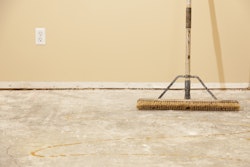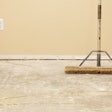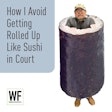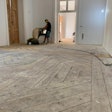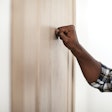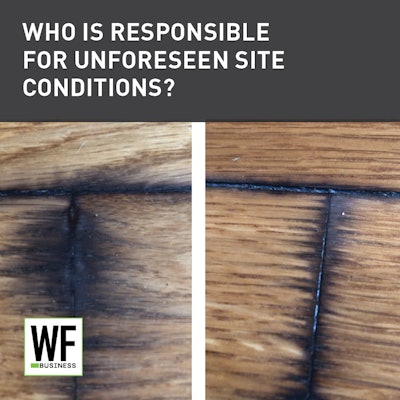
For this column, I will evaluate a situation that appeared on the WFB website, “The Case of the Burned Floor.” The full discussion about that may be found online here, but here’s a quick summary: The contractor refinished a floor and during the water popping process, a black stain appeared around the seams in one small room. The balance of the refinished floors looked fine. Upon further investigation, under the floor in that room, there was six-mil poly sheeting and no underlayment paper. It is believed this caused the black stains. Who is responsible in this situation?
Understandably, the homeowner does not want to pay more than the contract price. They hired the contractor to refinish the floors and feel the contractor must have been negligent. But was he? The contractor could not have known about the hidden conditions in that room, particularly when the other areas had no staining.
Unforeseen or “differing” conditions are physical conditions the contractor did not anticipate at the time of bidding, and there are generally two types:
1. Conditions that differ materially from what was indicated in the contract documents.
2. Conditions that are unusual and differ materially from what is normally encountered in similar work.
In this case, we are dealing with the second type. The legal rights regarding differing conditions depend on the contract terms and the state laws where the project is located.
More complex projects usually involve contracts that address the risk of differing conditions. For example, the contract might state that if differing conditions are encountered, the contractor will give notice, cease work and a change order must be agreed upon.
If the contract is silent about differing conditions, then a court would typically review:
1. If the conditions were truly unforeseeable
2. Any representations the parties made about the site conditions
3. Whether a party assumed the risk of the problem; e.g., even if the contract contains no site conditions clause, it might include other disclaimers.
These facts indicate that, after encountering the black staining and even after a flooring expert told him to stop, the contractor still completed sealing the floor. The contractor should have informed the homeowner and done no further work until the situation could be analyzed. However, even if the contractor had stopped, the cure would be the same: Pull out the boards, properly install underlayment and install and finish new boards. Therefore, unless the contract provided otherwise, I believe a court would hold the homeowner responsible for the extra costs to fix this floor because the contractor could not have known about the unusual conditions in that room.














